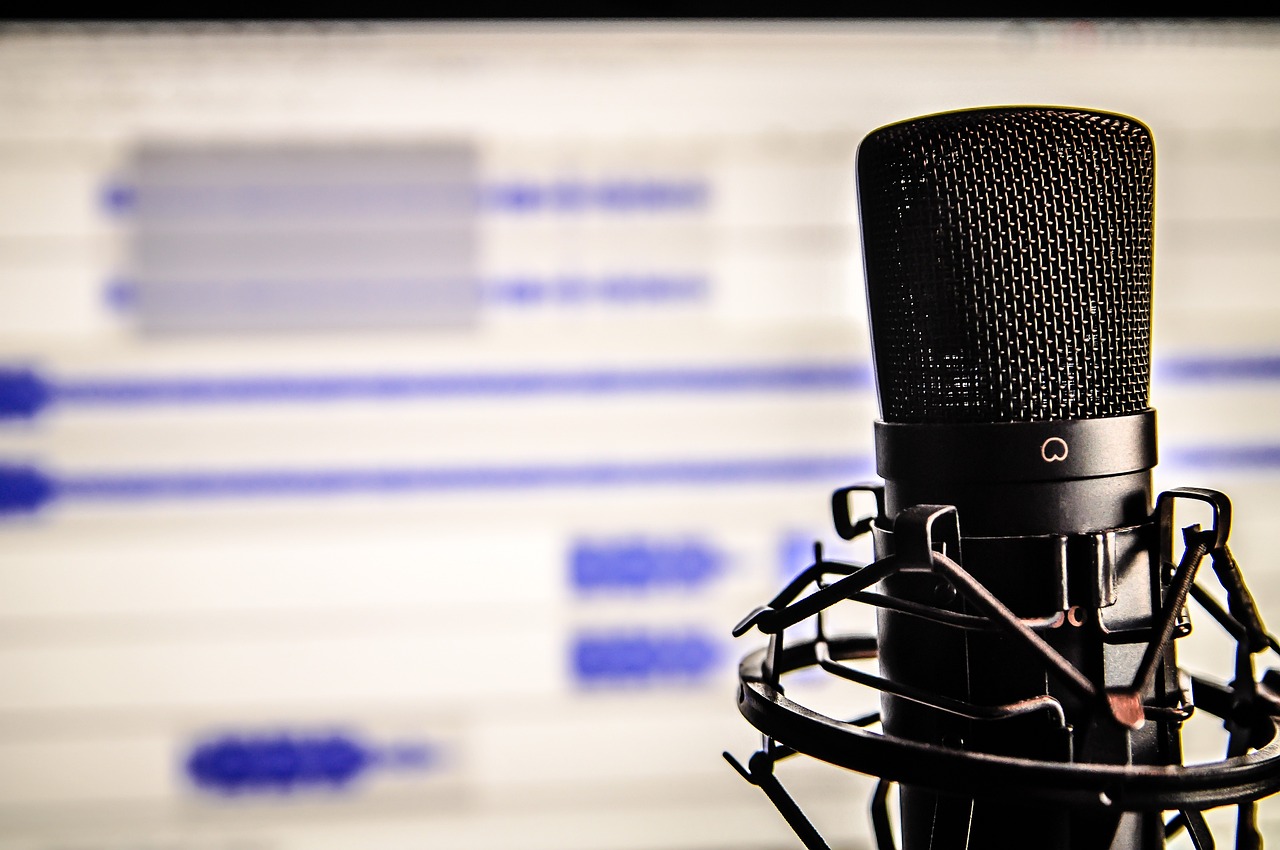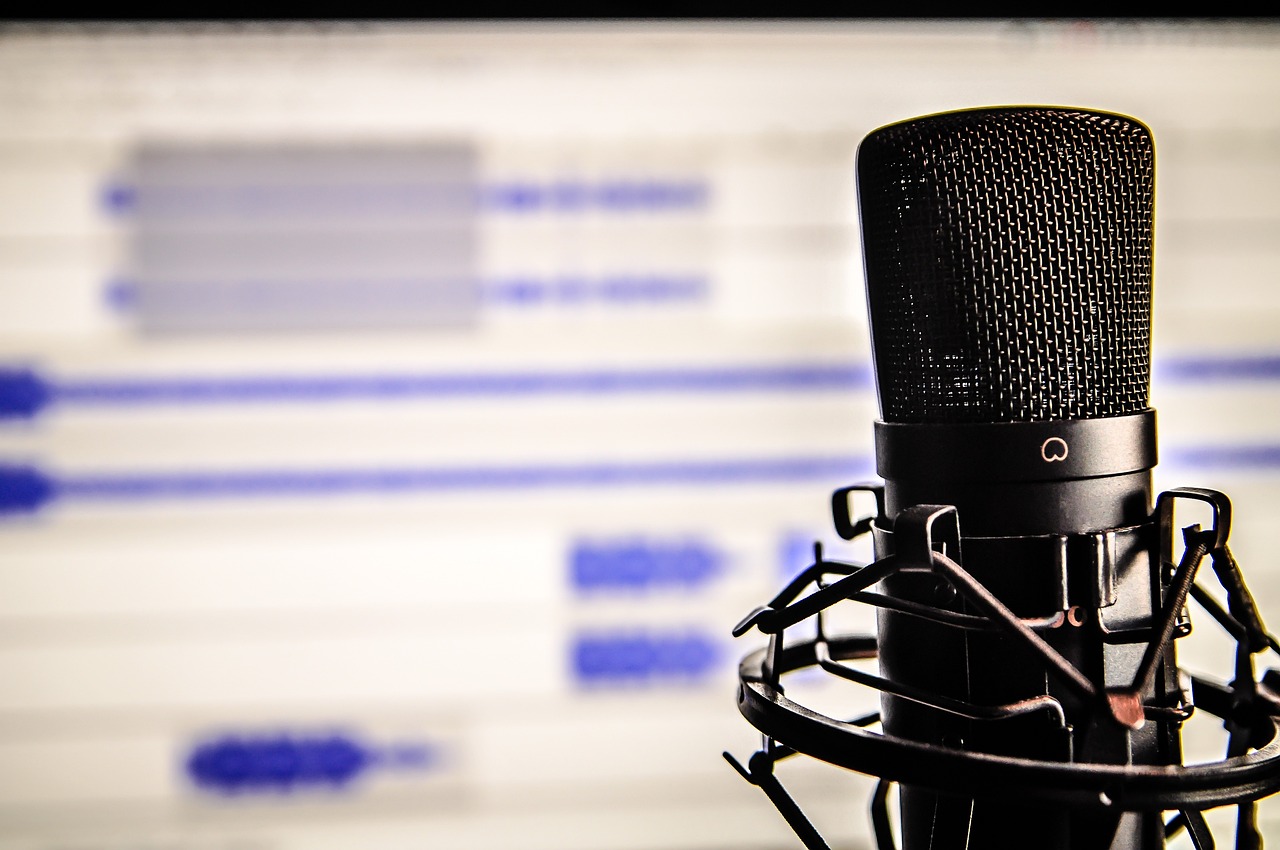If you’re ready to step up your podcasting game, then learning how to use podcasting software efficiently is a must. With a wide range of equipment and software options available, it’s important to know which ones will truly enhance your podcasting experience. In this article, we’ll explore the top three reasons why mastering podcasting software is vital for any aspiring podcaster. From improving sound quality and editing capabilities to streamlining your workflow, podcasting software can take your podcasts to the next level. So, let’s dive in and discover why you don’t want to miss out on the benefits of mastering podcasting software.

Enhances Your Production Quality
In order to produce high-quality podcasts, it is crucial to have a solid understanding of podcasting software and how to optimize audio quality using various tools. By familiarizing yourself with these tools and techniques, you can elevate the overall production quality of your podcasts.
Understanding Podcasting Software
Podcasting software is the backbone of any podcast production process. It allows you to record, edit, and produce your podcasts with ease. By understanding how podcasting software works, you can navigate through its features, utilize various audio effects, and efficiently edit your recordings. Some popular podcasting software options include Adobe Audition, Audacity, Auphonic, and PreSonus.
Optimizing Audio Quality Using Various Tools
Audio quality plays a vital role in making your podcasts enjoyable for your listeners. There are several tools available that can help you enhance the audio quality of your recordings. These tools include noise reduction plugins, equalizers, compressors, and audio restoration software. By implementing these tools and techniques, you can ensure that your podcasts sound professional and pleasing to the ear.
Tips for Editing and Post-Production Work
Editing and post-production work are essential steps in the podcast production process. It involves tasks such as removing any unwanted noises or distractions, adjusting volume levels, adding music or sound effects, and creating a consistent flow throughout the episode. By mastering the art of editing and post-production, you can create podcasts that are engaging, well-paced, and polished.
Save resources with efficient audio editing tools
Time is a valuable resource, and efficient audio editing tools can help you save time during the podcast production process. These tools often come with shortcuts, batch processing capabilities, and automation features that streamline repetitive tasks. By utilizing these tools, you can work more efficiently and devote more time to creating compelling content for your listeners.
Using Software to Improve Podcast Aesthetics
Podcasts are not just about audio; the visual aspect also plays a role in attracting and engaging listeners. Utilizing software can help you enhance the aesthetics of your podcast by designing visually appealing cover art, creating social media promotional graphics, and optimizing your podcast website. By paying attention to the overall aesthetics, you can make a lasting impression on your audience and attract more listeners.
Improves Listener Experience
One of the primary goals of podcasting is to provide an enjoyable and seamless experience for your listeners. By focusing on improving various aspects of your podcast, you can enhance the listener experience and keep them coming back for more.
Ensuring Clear Audio for Listeners
Clear audio is crucial for a positive listener experience. By investing in high-quality microphones such as Shure, Rode, Audio-Technica, or the Blue Yeti Microphone, you can capture clear and crisp audio. Additionally, using tools like pop filters and microphone isolation shields can further minimize unwanted background noise and ensure that your listeners can hear every word clearly.
Managing and Structuring Content Efficiently
Organizing your podcast content in a structured and logical manner is key to keeping your listeners engaged. By utilizing podcasting software with features such as chapter markers, you can break down your episodes into segments and provide easy navigation for your listeners. This not only improves the overall listening experience but also allows your audience to revisit specific sections that they find valuable.
Adjustments for Different Podcasting Styles
Different podcasting styles require different approaches to optimize the listener experience. For interview-style podcasts, using techniques like noise reduction plugins and equalizers can ensure that both the host and guest’s audio are balanced and clear. For narrative-style podcasts, employing tools like audio effects and music can create a more immersive and captivating experience for your listeners. By understanding the nuances of different podcasting styles, you can tailor your production techniques accordingly.
Audience Engagement Enhancement
Engaging with your audience is crucial in building a loyal listener base. Utilizing software tools, such as integrated feedback systems or social media integration, can help you gather feedback, answer questions, and interact with your listeners. By actively engaging with your audience, you can create a sense of community and foster a stronger connection with your listeners.
Improving Accessibility through Transcripts and Notes
Accessibility is often overlooked but essential for a comprehensive listener experience. By providing transcripts or detailed show notes, you cater to a broader audience, including those with hearing impairments or those preferring to read the content. Additionally, transcripts and notes make your podcast searchable, allowing new listeners to discover and explore your episodes more easily.

Increases Efficiency and Productivity
Efficiency and productivity are crucial when producing podcasts consistently. By optimizing your workflow and automating repetitive tasks, you can save valuable time and focus on creating quality content for your audience.
Streamlining Podcast Process Workflow
Creating an efficient podcast workflow involves organizing your tasks, establishing a consistent schedule, and utilizing project management tools. By streamlining your workflow, you can ensure that each step of the production process is well-executed and properly timed, leading to a more efficient and productive podcast production.
Automating Aspects of Podcast Production
Automation can significantly improve your productivity by eliminating repetitive and time-consuming tasks. By using podcasting software with automation features, you can automate processes such as file rendering, tagging episodes, and publishing your podcasts on various platforms. Automating these tasks allows you to focus on content creation and reduces the chances of human error.
Time Saving Tricks on Popular Podcasting Software
Podcasting software often comes with hidden features and shortcuts that can be time-saving tricks once discovered. By investing time in learning these tricks, you can optimize your workflow and speed up your podcast production process. Some popular podcasting software, such as Adobe Audition and Audacity, have extensive online communities and tutorials where you can learn and share these time-saving tricks.
Improving Consistency in Production
Consistency is essential in building a brand and retaining listeners. By maintaining a consistent style, audio quality, and release schedule, you establish trust and familiarity with your audience. Utilizing software to create templates and presets, such as intro music or episode structure, can help you maintain consistency across your podcast episodes.
Integrated features for monetization
Monetization is an appealing aspect of podcasting for many creators. Utilizing podcasting software that offers integrated features for monetization, such as sponsor tracking, ad insertion points, or analytics, can simplify the process of generating revenue from your podcasts. By leveraging these features, you can focus on creating valuable content while also capitalizing on monetization opportunities.
Popular Podcasting Microphones
Choosing the right microphone is crucial for capturing high-quality audio in your podcasts. Here are some popular podcasting microphones that are known for their exceptional performance:
Shure
Shure is a well-established brand in the audio industry, known for its high-quality microphones such as the Shure SM7B and the Shure MV7. These microphones offer excellent sound reproduction and are widely used by professional podcasters and broadcasters.
Rode
Rode microphones, such as the Rode NT-USB and the Rode Podcaster, are popular choices among podcasters. They provide clear and reliable audio performance, making them suitable for both beginners and experienced podcasters.
Audio-Technica
Audio-Technica offers a range of microphones suitable for podcasting, including the Audio-Technica ATR2100x-USB and the Audio-Technica AT2020. These microphones deliver exceptional audio quality and are often praised for their affordability.
Blue Yeti Microphone
The Blue Yeti microphone is a versatile and widely recognized microphone in the podcasting community. It offers multiple pickup patterns and adjustable gain settings, allowing you to capture different types of audio with ease.
Neewer Professional Studio Recording Microphone
The Neewer Professional Studio Recording Microphone is a budget-friendly option that still delivers good sound quality. It is a condenser microphone that is well-suited for vocals and spoken audio.

Prominent Podcasting Software
Choosing the right podcasting software is essential for efficient and effective podcast production. Here are some prominent podcasting software options:
Adobe Audition Podcasting Software
Adobe Audition is a professional-grade audio editing and production software widely used in the podcasting industry. It offers a comprehensive range of tools and features for recording, editing, and mixing audio, making it a popular choice among podcasters.
Audacity Audio Editor and Recorder
Audacity is a free and open-source audio editing software that provides a wide array of features for podcast production. It is beginner-friendly and offers basic editing capabilities, making it an accessible option for those starting in podcasting.
Auphonic
Auphonic is an online audio post-production and optimization service that simplifies the process of enhancing audio quality. It offers noise reduction, leveling, and encoding features, making it a convenient option for podcasters looking to optimize their audio.
PreSonus
PreSonus Studio One is a digital audio workstation that offers a range of features for podcasting. It provides a user-friendly interface, advanced editing capabilities, and seamless integration with hardware controllers, making it a powerful tool for podcast production.
Qualities of Good Podcasting Headphones
Podcasting headphones play a crucial role in ensuring accurate audio monitoring and quality control during the production process. Here are some qualities to look for in good podcasting headphones:
AKG K240 Studio Semi-Open Over-Ear Professional Studio Headphones
AKG K240 Studio headphones are known for their accurate sound reproduction and comfort. They provide a clear and detailed audio representation, making them ideal for podcasters who require precise monitoring.
Sennheiser
Sennheiser headphones, such as the Sennheiser HD 650 and the Sennheiser HD 660 S, are popular choices among podcasters. They offer excellent sound quality, durability, and comfort, allowing for long hours of use during podcast production.
Sony
Sony headphones, such as the Sony WH-1000XM4 and the Sony MDR-7506, are known for their sound isolation capabilities and accurate sound reproduction. They provide a comfortable listening experience and are often favored by podcasters for their reliability.
Yamaha
Yamaha headphones, such as the Yamaha HPH-MT8 and the Yamaha HPH-MT5, offer a balanced sound profile and durability. They are designed to provide accurate audio monitoring, making them suitable for professional podcast production.
Cloud Microphones
Cloud Microphones offers headphones specifically designed for podcasting, such as the Cloud Microphones Cloudlifter CL-1. These headphones provide clear and detailed sound reproduction, making them a popular choice among podcasters.

Studio Monitors for Podcasting
Studio monitors are essential for accurately assessing audio quality during the podcast production process. Here are some studio monitor options suitable for podcasting:
KRK ROKIT 5 G4 Studio Monitor
KRK ROKIT 5 G4 studio monitors offer accurate sound reproduction and a compact design, making them suitable for small podcasting setups. They provide a balanced sound profile, allowing you to make precise audio adjustments during editing.
Elgato
Elgato Wave 3 studio monitors are designed specifically for content creators, including podcasters. They offer high-quality audio reproduction, easy-to-use controls, and integration with popular streaming and recording software.
Mackie
Mackie studio monitors, such as the Mackie CR3-XBT and the Mackie MR524, provide clear and detailed sound reproduction. They are known for their durability and ease of use, making them a reliable choice for podcasters.
Podcasting Mixers
Podcasting mixers allow you to control audio levels, balance multiple audio sources, and enhance your sound during the production process. Here are some podcasting mixer options:
Behringer Xenyx X1204USB Premium 12-Input Mixer
The Behringer Xenyx X1204USB mixer offers multiple inputs, built-in effects, and USB connectivity, making it a versatile choice for podcasters. It allows you to control audio levels, add effects, and connect multiple microphones or audio sources.
Zoom
Zoom produces a range of audio mixers suitable for podcasting, such as the Zoom LiveTrak L-8 and the Zoom PodTrak P8. These mixers offer intuitive controls, multi-track recording capabilities, and built-in effects, making them ideal for podcast production.
Focusrite
Focusrite mixers, such as the Focusrite Scarlett 4i4 and the Focusrite Scarlett 18i8, provide high-quality audio interfaces with built-in preamps and audio mixing capabilities. They offer low latency and excellent sound reproduction, making them popular choices for podcasters.

Addressing Common Troubleshooting Issues
During podcast production, various troubleshooting issues may arise. Here are some common issues and how to address them:
Dealing with Poor Audio Quality
Poor audio quality can negatively impact the listener experience. To address this issue, ensure that your microphones are properly connected and positioned, and adjust your audio settings to optimize sound levels. Additionally, using acoustic treatments, such as foam panels or a portable vocal booth, can help improve overall audio quality.
Resolving Connection and Compatibility Issues
Technical issues related to connections and compatibility can disrupt podcast production. Ensure that all your hardware and software are up to date and that all connections are secure. Troubleshoot by restarting devices, checking cables, and verifying compatibility between different equipment and software.
Handling File Format and Saving Errors
Errors related to file format and saving can lead to data loss or incompatibility. Always save your podcast projects in multiple formats and backup your files regularly. If you encounter file format errors, consider using file conversion software or reaching out to technical support for assistance.
Maintaining Software Updates
Regularly updating your podcasting software is crucial to ensure optimal performance and access to the latest features. Keep track of software updates and install them promptly to avoid compatibility issues or missing out on improvements.
Overcoming Workflow and Automation Glitches
Workflow and automation glitches can disrupt the podcast production process. Take the time to thoroughly understand your podcasting software and its automation features. Double-check your settings, test automation sequences, and have contingency plans in place to overcome any glitches that may arise.
Continued Learning and Mastery
To excel in podcasting, it is essential to continue learning and constantly improve your skills. Here are some ways to grow as a podcaster:
Exploring Advanced Podcasting Techniques
Once you have a solid foundation in podcasting, explore advanced techniques such as advanced audio editing, audio mixing, or creating immersive soundscapes. Experiment with new tools and techniques to enhance the overall production quality of your podcasts.
Building Your Own Podcasting Setup
Customize your podcasting setup to meet your specific needs and preferences. Consider investing in additional equipment, such as microphone stands, shock mounts, or monitor speakers, to create a comfortable and efficient workspace.
Experimenting with Various Software and Equipment
Don’t be afraid to try out different podcasting software and equipment to find what works best for you. Experiment with different microphones, headphones, mixers, or editing software to discover your preferred tools and achieve the desired sound quality.
Keeping up with Industry Trends and Updates
Podcasting is an ever-evolving industry, with new trends, techniques, and software updates constantly emerging. Stay updated by reading industry publications, listening to podcasts on podcasting, and engaging with the podcasting community to keep your skills and knowledge current.
Utilizing Feedback for Improvement
Actively seek feedback from your listeners and fellow podcasters. Pay attention to constructive criticism and suggestions for improvement. This feedback can help you identify areas for growth and make necessary adjustments to enhance your podcast production and listener experience.
By taking the time to learn and master podcasting software, you can enhance your production quality, improve the listener experience, and increase your efficiency and productivity. With the right tools and techniques, you can create podcasts that stand out, engage your audience, and leave a lasting impact.
